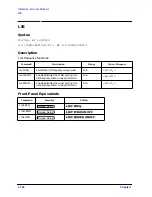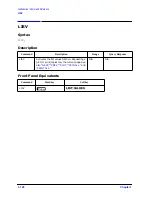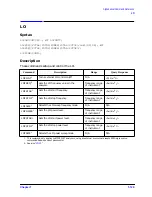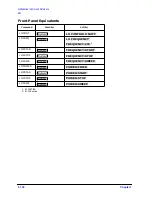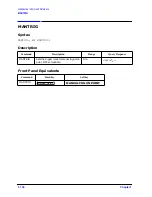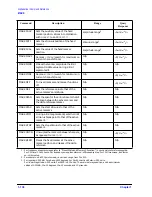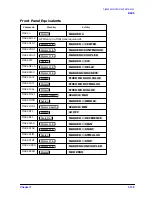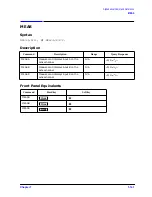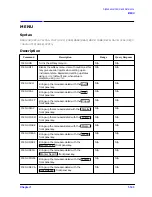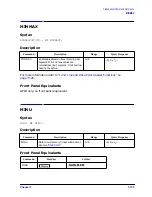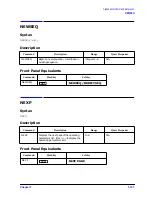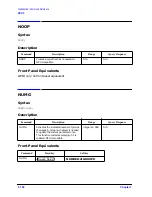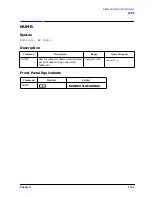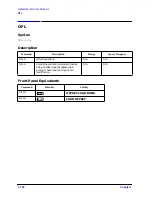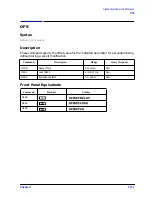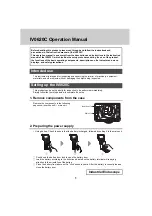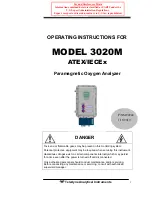
1-138
Chapter 1
Alphabetical Command Reference
MARK
MARKFAUV
Sets the auxiliary value of the fixed
marker position. Works in coordination
with
MARKFVAL
and
MARKFSTI
.
amplitude range
3
<num><
L
F
>
MARKFSTI
Sets the stimulus position of the fixed
marker.
stimulus range
<num><
L
F
>
MARKFVAL
Sets the value of the fixed marker
position.
amplitude range
<num><
L
F
>
MARKMAXI
Same as
SEAMAX
(search for maximum on
current channel's trace).
N/A
<0|1><
L
F
>
MARKMIDD
Makes the marker amplitude the limit
segment middle value during a limit
segment edit.
N/A
N/A
MARKMINI
Same as
SEAMIN
(search for minimum on
current channel's trace).
N/A
<0|1><
L
F
>
MARKOFF
Turns all markers and marker functions
off.
N/A
<0|1><
L
F
>
MARKREF
Sets the reference value to that of the
active marker's amplitude.
N/A
N/A
MARKSPAN
Sets the span for the entire trace to that of
the span between the active marker and
the delta reference marker.
N/A
N/A
MARKSTAR
Sets the start stimulus to that of the
active marker's.
N/A
N/A
MARKSTIM
During a limit segment edit, sets the limit
stimulus break point to that of the active
marker's.
N/A
N/A
MARKSTOP
Sets the stop stimulus to that of the active
marker's.
N/A
N/A
MARKUNCO
Uncouples the markers between channels,
as opposed to
MARKCOUP
.
N/A
<0|1><
L
F
>
MARKZERO
Places the fixed marker at the active
marker position and makes it the delta
reference.
N/A
N/A
1. For frequency or power sweeps, refer to “Preset State and Memory Allocation,” in your analyzer’s reference guide.
For CW time: 0 to 24 hours. For frequency sweep, transform on:
±
1/frequency step. For CW time sweep, transform
on:
±
1/time step.
2. For example, on a 201 point sweep, <num> can range from 0 to 200.
3. For log mag:
±
500 dB. For phase:
±
500 degrees. For Smith chart and Polar:
±
500 units.
For linear magnitude:
±
500 units. For SWR:
±
500 units. The scale is always positive, and has minimum
values of 0.001dB, 10e
−
12 degrees, 10e
−
15 seconds, and 10 picounits.
Command
Description
Range
Query
Response
Summary of Contents for 8719ES
Page 15: ...1 1 1 Alphabetical Command Reference ...
Page 293: ...2 1 2 Introduction to Instrument Control ...
Page 310: ...3 1 3 GPIB Programming ...
Page 334: ...4 1 4 Reading Analyzer Data ...
Page 343: ...5 1 5 Data Processing Chain ...
Page 350: ...6 1 6 Error Reporting ...
Page 364: ...7 1 7 Programming Examples ...
Page 502: ...A 1 A Preset Conditions ...
Page 517: ...B 1 B Command Listings ...



